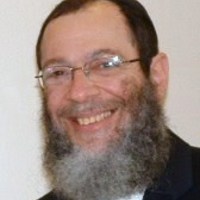
In 1974, I was in graduate school. I had voluminous amounts of material to memorize and I was struggling. Then, Hashgacha Pratis brought about the publication of a book that changed my life over the long term and got me through graduate school in the short term: The Memory Book by Harry Lorayne and Jerry Lucas. Yes, that is the Jerry Lucas who played for the Knicks. After retirement, he co-authored The Memory Book which sold more than two million copies and is still in print today.
The Memory Book teaches the skill of associative memory or mnemonics. Mnemonic devices are ways of remembering by using association, associating easy to remember things with data. The term “in the first place” is a remnant of the ancient Greek and the Roman systems of mnemonics. They would store ideas, topics, or words in the rooms of an imaginary house and recall call them by thinking of the rooms in order and retrieving the image they had stored there.
In our culture, we find mnemonic devices in Shas and in common usage. A gemara that is about to list a number of opinions on a topic will sometimes preface them with a siman, a list of words to help us remember the order of the coming material. Many of us know the mnemonic device yaal k’gam to remember the halachos where we poskin like Abaye rather than like Rava. In the Hagadah shel Pesach, we all know Rabi Yehuda’s acronym for the ten makos – d’tzach adash b’achav. That is a mnemonic device.
One of the techniques presented in The Memory Book involves associating numbers with letters. We already have that; in Hebrew, numbers are represented by letters! Thus, we all know the mnemonic devices Tu b’Shevat, Tu b’Av, and Lag b’Omer which stand for the 15th and 33rd days.
I hope you have found all of this information and history interesting. Now, what’s the take-away, or as we more formally call it, the musar haskail, from all this memory information?
There are two messages I would like you to take from this.
The first is that you encourage and enable your child to master the techniques of associative memory, the use of mnemonic devices. Rav Chisda taught that knowledge of the Torah is not acquired except through simanim. (Eruvin 54b)
This idea is alluded to in a pasuk as understood by the gemara and elaborated on by Chacham Yosef Chaim, often referred to as the Ben Ish Chai.
“In days to come shall Yaakov take root, Yisrael shall blossom [yatziz] and bud [ufarah].” (Yeshayahu 27,6)
- Yosef taught: This refers to scholars in Babylonia who wreathe blossoms [tzitzin] and flowers [perachim] around the Torah. (Shabbos 145b)
Perachim are mnemonic devices, simanim, that are made for Torah laws so that they will not be forgotten. These simanim are like the flowers that guard the fruit as it begins to emerge from the tree. (Ben Ish Chai in Ben Yehoyada, ibid)
If you don’t know how to help your child create simanim, invest in a book that teaches it. The Memory Book is only one of many available. Generally speaking, I advise against leaving children to their own devices, especially electronic ones, but I advise you to give them all the mnemonic devices available.
Secondly, the message is for you: to use the following mnemonic device all of the time: CPR.
No, I don’t, chas v’shalom, want you to be aware of Cardio Pulmonary Resuscitation all of the time.
I want you to use the letters CPR as a mnemonic for Concrete, Positive, Realistic.
This is a mnemonic for parents, teachers, children, husbands, wives, and anyone else who wants something from someone.
Before you can use this version of CPR, you have to figure out exactly what it is that you want. Then decide how soon you want it and how long you want it to last. If you don’t know what you want, don’t expect anyone else to figure it out for you. That too often results in your blaming them when you don’t like the way their idea of what you wanted turns out.
Sit still, think quietly, take your time, and figure out what you want in every situation. Slow down and figure out what you want and then slow down some more and figure out what would be the best thing to say or do that might get you what you want.
When a situation arises, don’t just do something because you find yourself thinking, “I can’t just stand there and do nothing.” You can just stand there and do nothing and you need to, rather than doing something you will later realize got you a result you truly did not want. You’ll know you ended up with something you truly did not want when you find yourself thinking, “I wish I hadn’t said that,” “I wish I hadn’t done that,” “that was a mistake.”
Once you have figured out what you want, when you want it, and for how long you want it to continue (when that is applicable), express all of that information using CPR.
The letter C stands for Concrete. Express your want in concrete, specific terms. “I want you behave nicely” is a great example of a vague, nebulous, non-specific want, the antithesis of concrete. Figure out what specifically you would like your child to do that you would consider nice behavior. Thinking to yourself, “she should know by now” will only cause you to become more frustrated and disappointed. Don’t do that to yourself.
If you give her a list of things you don’t want her to do, you’ve only told her what you don’t want. I want you to determine what you do want. Thus, the letter P in CPR. It stands for Positive. Express each of your wants in a positive manner. If all you can express is what you don’t want, you may never get what you do want. That usually means you don’t know what you do want. Sit down and think about it. Everyone around you would feel better about themselves if they could give you something good, not just make you less miserable.
The R stands for Realistic. If what you ask of someone is not realistic for them to give you, you may both end up miserable. To avoid this sad outcome, always follow your CPR expressed request with a question: What do you think about that?
Then, listen and talk to each other. You’ll get more nachas that way.
Rabbi Ackerman is the author of Confident Parents, Competent Children, in Four Seconds at a Time
Available at bookstores and on Amazon.
He can be reached at 718-344-6575

 Previous
Previous

